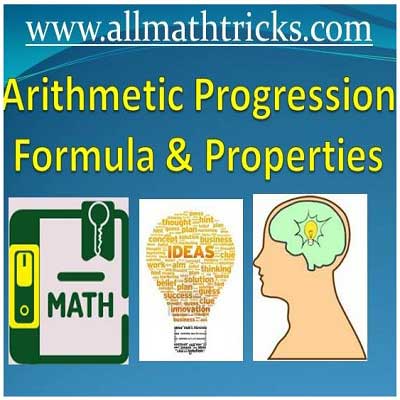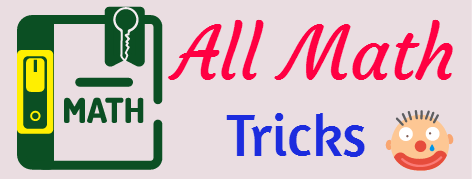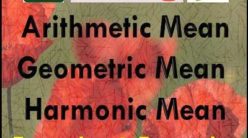In this session explained about Basic concepts of Sequence and series, introduction and formulas for arithmetic progression like Common Difference, Finite and infinite arithmetic Progressions, nth term , sum to first nth term and Properties of Arithmetic Progression.
Arithmetic Progression Definition, Properties, Formulas | Allmathtricks
Sequence following specific patterns are called progressions.
Basic concepts of sequence and series
Progressions are of three types. They are
1. Arithmetic Progression
2. Geometric Progression
3. Harmonic Progression
Arithmetic Progression
Arithmetic Progression can be defined as, a sequence of numbers is obtained by adding a fixed number “d” to the preceding term except the first term.
i.e A list of numbers X1, X2, X3, X4 . . . . . . . is an A.P, If the differences X2-X1, X3-X2, X4-X3, . . . . given the same value
Each of the number in the list of an arithmetic progression is called a term of that A.P.
The general form of an A.P is a, a+d, a+2d, a+3d . . . . . . ( Here “d” is the common difference and “a” is the first term )
Common Difference
The difference between two succeeding terms of an Arithmetic Progression is called common difference. The difference value can be positive,negative or zero.
Examples:
1) Rainfall of the last week ( in mm) 12, 10, 08, 06, 04, 02, 0
2) Temperature record for the last week ( in Deg.C) 30, 31, 32, 33, 34, 35, 36
3) 2, 4, 6, 8, 10, . . . . . . . . . . . .
4) 0, -5, -10, -15, -20, . . . . . . . . . . .
Finite and infinite arithmetic Progressions
In the above examples no. 1 & 2 having finite number of terms. Such arithmetic Progressions is called finite A.P. In the same way above examples no. 3 & 4 having infinite number of terms. So they are called infinite arithmetic Progressions
Formula for finding the nth term or general term of AP formula
Let r1, r2, r3, r4, . . . . . be an AP, Here first term ‘r1‘ is “r” and common difference is “d”
Then,
First term r1 = r = r + (1 -1 ) d
Second term r2 = r + d = r + ( 2-1)d
Third term r3 = r2 + d = r + ( 2-1)d +d = r + (3 -1) d
Fourth term r4 = r3 + d = r + (3 -1) d +d = r + (4 -1) d
Firth term r5 = r4 + d = r + (4 -1) d +d = r + (5 -1) d
Similarly use same pattern for nth term
rn = r + (n -1) d
rn is also called general term of the A.P
Using the above formula we can find different terms of the A.P
General notation of nth terms of an Arithmetic progression
Tn = a + ( n-1) d
Here Tn = nth of an A.P ; a = first term of the A.P ; d = common difference
If number of terms in an A.P is “ r” and last term is “L” then,
L = a + ( r – 1)d
Formula for finding the sum to first nth term an A.P
Let a, a+d, a+2d, a+3d, . . . . . . . . . be an AP, Here first term “a” and common difference is “d‘
The nth term of this A.P is an = a + ( n-1) d
Let Sum of “n” terms of an A.P is ” Sn“
Sn = a + (a+d) + (a+2d) + ( a+3d) + . . . . . . . . . + [ a + ( n-1) d ]
Now write Sn from last term of A.P
Sn = [ a + ( n-1) d ] + [ a + ( n-2) d ] + [ a + ( n-3) d ] + . . . . . . . . . . . + a
Adding Sn +Sn
⇒ 2Sn = [ 2a + ( n-1) d ] + [ 2a + ( n-1) d ] + [ 2a + ( n-1) d ] +. . . . . . . . . . .+ [ 2a + ( n-1) d ] ( n times)
⇒ 2Sn = n [ 2a + ( n-1) d ]
⇒
⇒ Sn = (n/2) [ a + a + ( n-1) d ] = (n/2) ( first term + nth term)
⇒ Sn = (n/2) ( a + an)
Properties of Arithmetic Progression
1. Reversed Sequence
If the Arithmetic Progression a, a+d, a+2d, a+3d . . . . . . m is reversed to m, m-d , m-2d, m-3d, . . . . a, then the common difference changes to negative of original common difference, and the reversed sequence is also A.P.
i.e a1, a2, a3,, . . . . . an-1, an are in A.P then an, an-1, . . . . . a3, a2, a1, are in A.P
Example:
1, 3, 5, 7, 9 is an A.P with common difference ” 2″
Now 9, 7, 5, 3, 1 is also an A.P with common difference “-2 “
2. If the Arithmetic Progression a, a+d, a+2d, a+3d . . . . . . , then
If d >0, then an > an-1 ( Here an is a nth term of above A.P)
If d < 0, then an < an-1 ( Here an is a nth term of above A.P)
3. If the sum of the first two terms is “a” and the sum of last two terms is “b” , number of terms is “n”
then the sum of the A.P is
4. The nth term of Arithmetic Progression is the difference of the sum to first “n” terms and sum of first (n-1) terms of it.
i.e an = Sn – Sn-1
5. If r1, r2, r3, r4, . . . . . rn be an finite A.P, then the sum of the terms equidistant from the beginning and the end is always same and is equal to the sum of the first and last term.
i.e r1 + rn = r2 + rn-1 = r3 + rn-2 = r4 + rn-3 = r5 + rn-4
6. If r1, r2, r3, r4, . . . . . rn be an finite A.P, then
i) rn, rn-1, rn-3, . . . . . r2, r1 are in A.P
ii) r1 ± k, r2 ± k, r3 ± k, r4± k, . . . . . rn ± k are in A.P ( Where k ∈ R )
iii) kr1, kr2, kr3, kr4, . . . . . krn are in A.P ( Where k ∈ R – {0} )
7. If r1, r2, r3, r4, . . . . . rn & a1, a2, a3, a4, . . . . . an are two finite A.P, then
i) a1+r1, a2+r2, a3+r3, . . . . . an+rn is in A.P
ii) a1r1, a2r2, a3r3, . . . . . anrn is not in A.P
iii) a1/r1, a2/r2, a3/r3, . . . . . an/rn is not in A.P

Related Articles
Arithmetic Progression Formulas
Arithmetic Progression Examples
Arithmetic Mean formula with Examples
Geometric Progression formulas
Geometric Progression Examples
Relationship Between AM, GM and HM
Factorizing Algebraic Expressions





